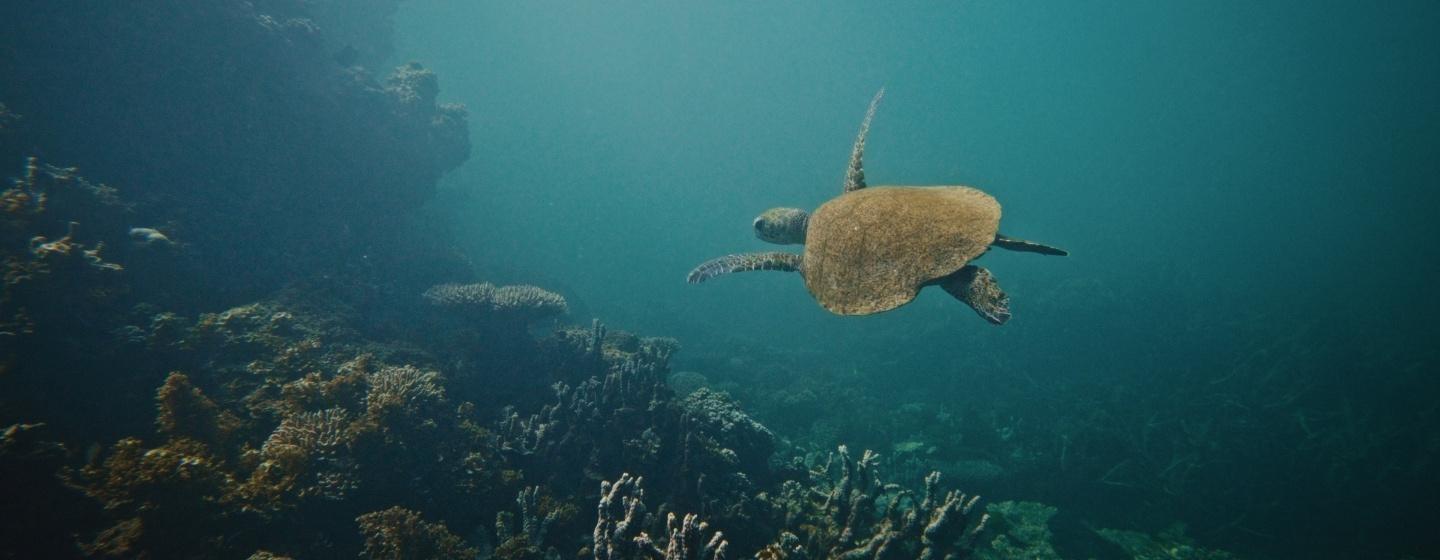How Dancing Turtles Contributed to a Groundbreaking Study


Baby turtles are cute. There’s no denying it. And when captive-reared baby loggerhead sea turtles are hungry and believe food is near, they do a little dance, which makes them even more cute.
Yep, the turtles dance. They raise their heads out of the water, open their mouths, flap their flippers and spin.
And that dancing caught the attention of biology researchers at UNC-Chapel Hill. Not just because it’s adorable but also because it sheds light on the turtles’ amazing ability to return to the same feeding sites throughout their lives, no matter how far away they ventured.
Kayla Goforth, a recent doctoral graduate student and the primary researcher on the project, believed turtles use the Earth’s magnetic field to memorize specific geographic areas they associate with food.
“Kayla began to wonder if we could get the turtles to associate the magnetic signature of a place with food—and therefore act out this turtle dance behavior,” said Kenneth Lohmann, Ph.D., a biology professor at UNC-Chapel Hill, on the university’s website. Lohmann’s lab was used for the study.
Researchers replicated magnetic fields that exist in several locations in the ocean. They conditioned loggerhead turtles to those fields in the lab, repeatedly feeding the turtles in some fields and not feeding them in others.
Later, when the turtles were exposed to fields in which they were fed, they started doing their dance. That confirmed the turtles associated a specific magnetic signature with food.
In other words, the findings indicate loggerhead sea turtles can learn the magnetic signatures of geographical places.
“That’s how we figured out what to measure, just by watching them do this as we were feeding them in the lab,” said Goforth. “When they get really excited, they stick their heads out; they slap their flippers wildly; then spin in place sometimes.” Goforth is now working on postdoctoral research at Texas A&M University.
While turtles use their map sense to find places with magnetic signatures, they also have a magnetic compass sense that enables them to move north, south, east or west.
Researchers used radiofrequency oscillating magnetic fields on the turtles’ magnetic senses and discovered that while the fields had no effect on the turtles’ map ability, they did disrupt their ability to understand direction. This suggests that the map and compass senses detect magnetic fields in different ways.
So, while the study provided more information on the turtles’ magnetic map and compass systems, scientists still don’t understand how the turtles use them.
“What’s the mechanism and what is the sensor?” said Goforth. “We know that for the visual sense, you have eyes; for the sense of smell, you have a nose; and for hearing, you have ears. But no receptor like that has been identified for the magnetic sense, and the mechanism remains unknown.”